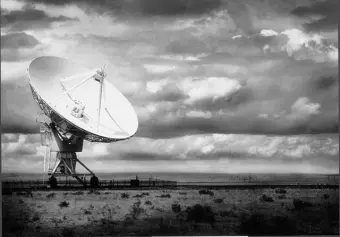Cultures in Orbit
Satellites and the Televisual
Format:Hardback
Publisher:Duke University Press
Published:20th Apr '05
Currently unavailable, and unfortunately no date known when it will be back

Argues that satellites are not a transparent form of distribution of information, but rather that they produce specific media practices and modes of production.
In 1957 Sputnik, the world’s first man-made satellite, dazzled people as it zipped around the planet. By the beginning of the twenty-first century, more than eight thousand satellites orbited the Earth, and satellite practices such as live transmission, direct broadcasting, remote sensing, and astronomical observation had altered how we imagined ourselves in relation to others and our planet within the cosmos. In Cultures in Orbit, Lisa Parks analyzes these satellite practices and shows how they have affected meanings of “the global” and “the televisual.” Parks suggests that the convergence of broadcast, satellite, and computer technologies necessitates an expanded definition of “television,” one that encompasses practices of military monitoring and scientific observation as well as commercial entertainment and public broadcasting.
Roaming across the disciplines of media studies, geography, and science and technology studies, Parks examines uses of satellites by broadcasters, military officials, archaeologists, and astronomers. She looks at Our World, a live intercontinental television program that reached five hundred million viewers in 1967, and Imparja tv, an Aboriginal satellite tv network in Australia. Turning to satellites’ remote-sensing capabilities, she explores the U.S. military’s production of satellite images of the war in Bosnia as well as archaeologists’ use of satellites in the excavation of Cleopatra’s palace in Alexandria, Egypt. Parks’s reflections on how Western fantasies of control are implicated in the Hubble telescope’s views of outer space point to a broader concern: that while satellite uses promise a “global village,” they also cut and divide the planet in ways that extend the hegemony of the post-industrial West. In focusing on such contradictions, Parks highlights how satellites cross paths with cultural politics and social struggles.
“Cultures in Orbit is a stunning achievement. Lisa Parks weaves a fascinating tale of the culture of the satellite, one that changes how we think about media and globalization. Parks’s compelling and original account demonstrates how profoundly the televisual imagination has shaped culture and knowledge production in the global age. Deftly combining cultural theory with extensive research across archives and disciplines, this book is a must-read for anyone interested in the geopolitical processes of media and the politics of technological change.”—Anna McCarthy, author of Ambient Television: Visual Culture and Public Space
“Cultures in Orbit is a welcome contribution to the study of converging media technologies that draws on too often distinct ideas in cultural studies, visual studies, technology studies, media studies, and studies in globalization. Lisa Parks offers a deft and nuanced analysis of satellite-television interdependency in diverse geopolitical sites, demonstrating with admirable lucidity how each constellation of imaging/viewing practices arises from a specific combination of technological, commercial, military, aesthetic, and cultural forces. This book illuminates the materiality of technology and its crucial role(s) in mediating the images and events we call Earth.”—Jody Berland, editor of TOPIA: Canadian Journal of Cultural Studies
ISBN: 9780822334613
Dimensions: unknown
Weight: 503g
256 pages